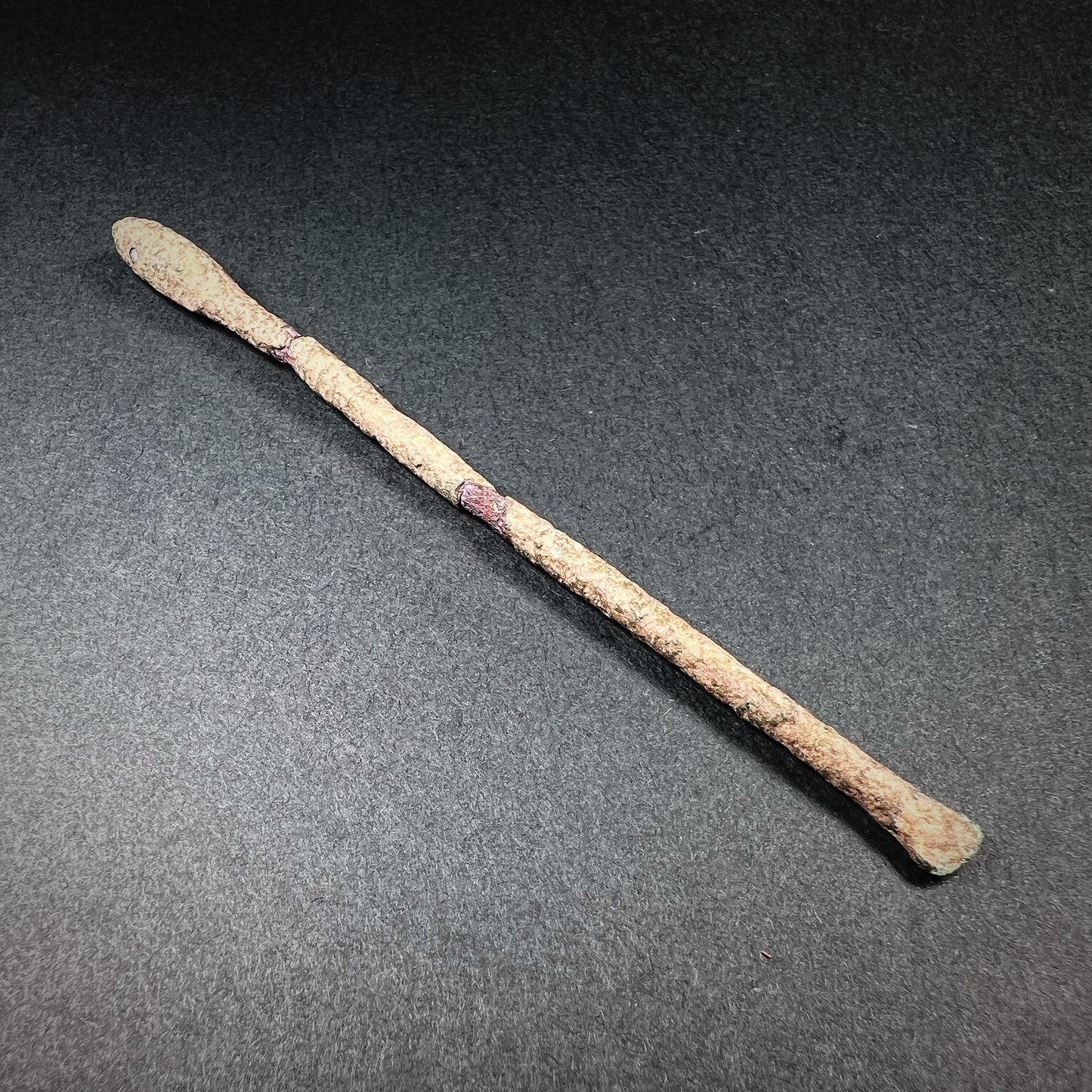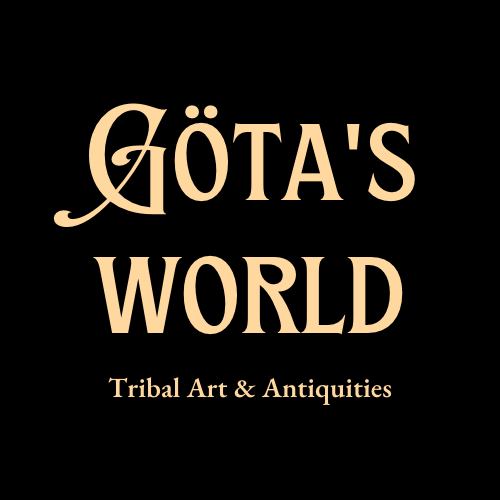Bactrian Bronze Kohl Applicator
Bactrian Bronze Kohl Applicator
Couldn't load pickup availability
Bactria-Margiana Archaeological Complex, c. 2200–1700 BC, Central Asia
This magnificent cast bronze kohl applicator and spatula, dating to the Bactria-Margiana Archaeological Complex (BMAC) period, c. 2200–1700 BC, is an exquisite example of early craftsmanship from the Bronze Age civilization of Central Asia. Its characteristic form features one end tapering into a slender, slightly upturned spatula and the other thickening into a bulbous terminal, reflecting both functional design and aesthetic appeal.
The BMAC, also referred to as the Oxus Civilization, represents a sophisticated Bronze Age culture that thrived in the regions south of the Oxus River (modern Amu Darya) in northern Afghanistan and the ancient satrapy of Margiana, corresponding to modern southeastern Turkmenistan and southern Uzbekistan. This civilization, dated to approximately 2250–1700 BC, was notable for its sedentary population, advanced irrigation agriculture of wheat and barley, monumental architecture, and highly developed material culture, including bronze tools, ceramics, and jewelry crafted from semi-precious stones.
Kohl, a cosmetic and protective substance used for darkening the eyes, holds a deep historical and cultural significance. Originating as early as Naqada III in Egypt (c. 3100 BC), it was traditionally made using stibnite (antimonite) or galena (lead glance). Beyond its aesthetic function, kohl served as protection against eye ailments and was believed to shield the wearer from the sun's harsh rays. The use of kohl extended beyond its protective and cosmetic roles, acquiring religious and cultural importance in many regions. In Islamic tradition, the Prophet Muhammad is said to have used Ithmid (antimony-based kohl) and encouraged its use, citing its benefits for vision and hair growth:
"One of the best kinds of kohl that you use is Ithmid; it brightens the vision and makes the hair (eyelashes) grow."
This elegant bronze tool, associated with such an ancient and enduring practice, not only reflects the BMAC's remarkable craftsmanship but also serves as a poignant reminder of the interconnectedness of early civilizations through shared practices and cultural traditions.
Good condition. Wear consistent with age and use. Surface scratches and corrosion due oxidation. Built up verdigris patina, rich earthen deposits. Size approx. 12,5cm x 0,5cm.
Provenance: Danish private collection.
For a similar examples see:
Kohl-stick, The British Museum, Accession Number: 2007,6001.14271 (https://www.britishmuseum.org/collection/object/W_2007-6001-14271)
Kohl stick, The Metropolitan Museum of Art, Accession Number: 12.181.260 (https://www.metmuseum.org/art/collection/search/576258)
Long Kohl Stick with Knife on One End, The Brooklyn Museum, Accession Number: 37.663E (https://www.brooklynmuseum.org/opencollection/objects/117272)
References and further reading:
Margus, Turkmenistan: Ancient oriental kingdom in the old delta of the Murghab river, Wiktor Sarianidi, Publisher Benatzky Druck & Medien, January 1, 2002.
Treasures from the Oxus: The Art and Civilization of Central Asia, Massimo Vidale, Bloomsbury Publishing, 2017.
Thinking Around Grave 3245 in the 'Royal Graveyard' of Gonur (Murghab Delta, Turkmenistan), in: On the Track of Uncovering a Civilisation. A volume in honor of the 80th-anniversary of Victor Sarianidi, Sandro Salvatori, 2010.


-
Shipping
The shipment will be prepared in the course of 3-5 days and dispatched via Posti Group Oyj or purchased item(s) can be picked up from our shop during the store's opening hours (Tarkk’ampujankatu 4, 00140, Helsinki, Finland). Within the Finland, all items are shipped via Posti Group Oyj unless otherwise requested. We pack the items carefully and mainly in recycled materials because we want to save nature. You will receive the tracking number for your items by e-mail.
-
Returns
Returns and exchange will be accepted within fourteen days (14) of receipt at the purchaser’s cost to include freight and packaging. Items must be returned in the same condition as when they were shipped, and will not be accepted if damaged or altered in any way. Please inform us via email (info@gotanmaailma.fi) or by calling +358408408352 before sending. We do not accept returns more than 14 days after delivery.


